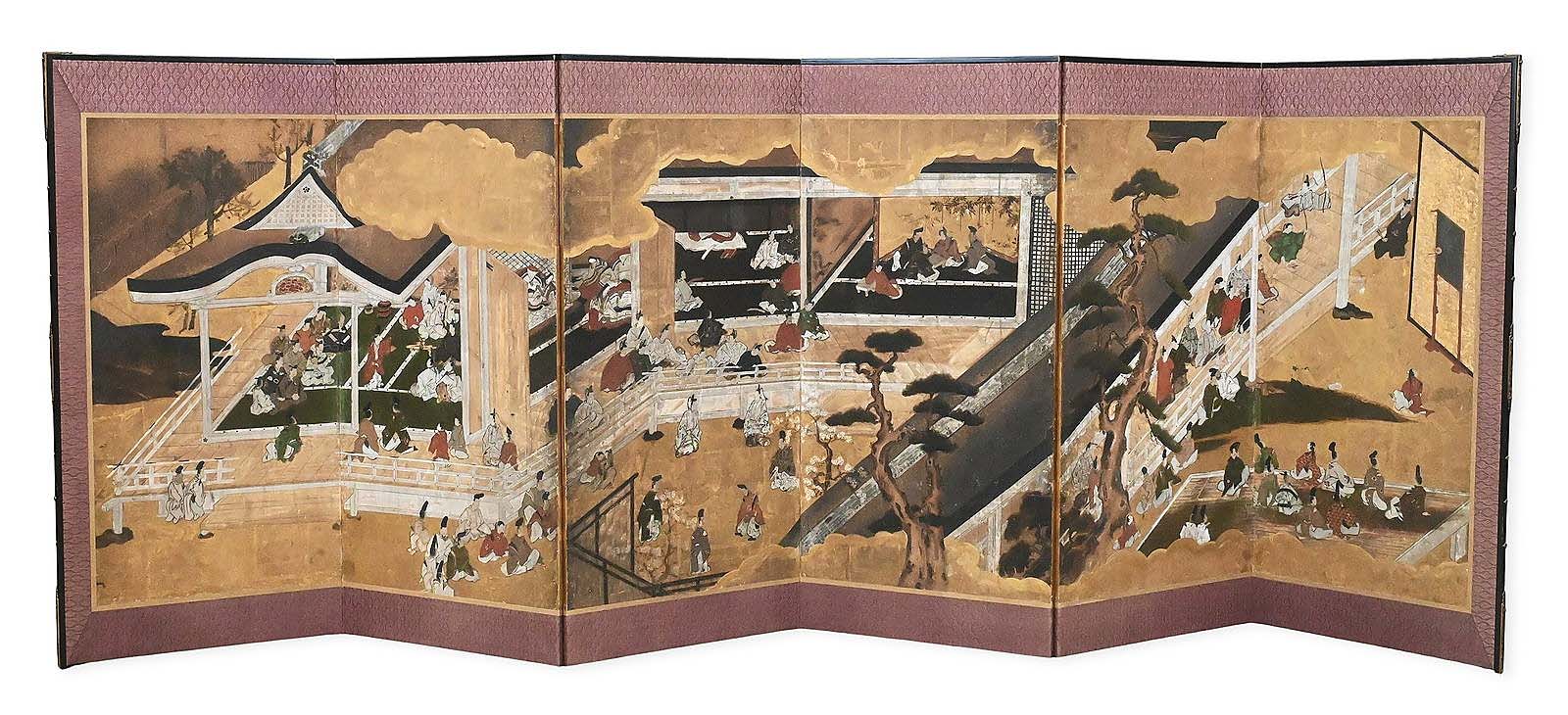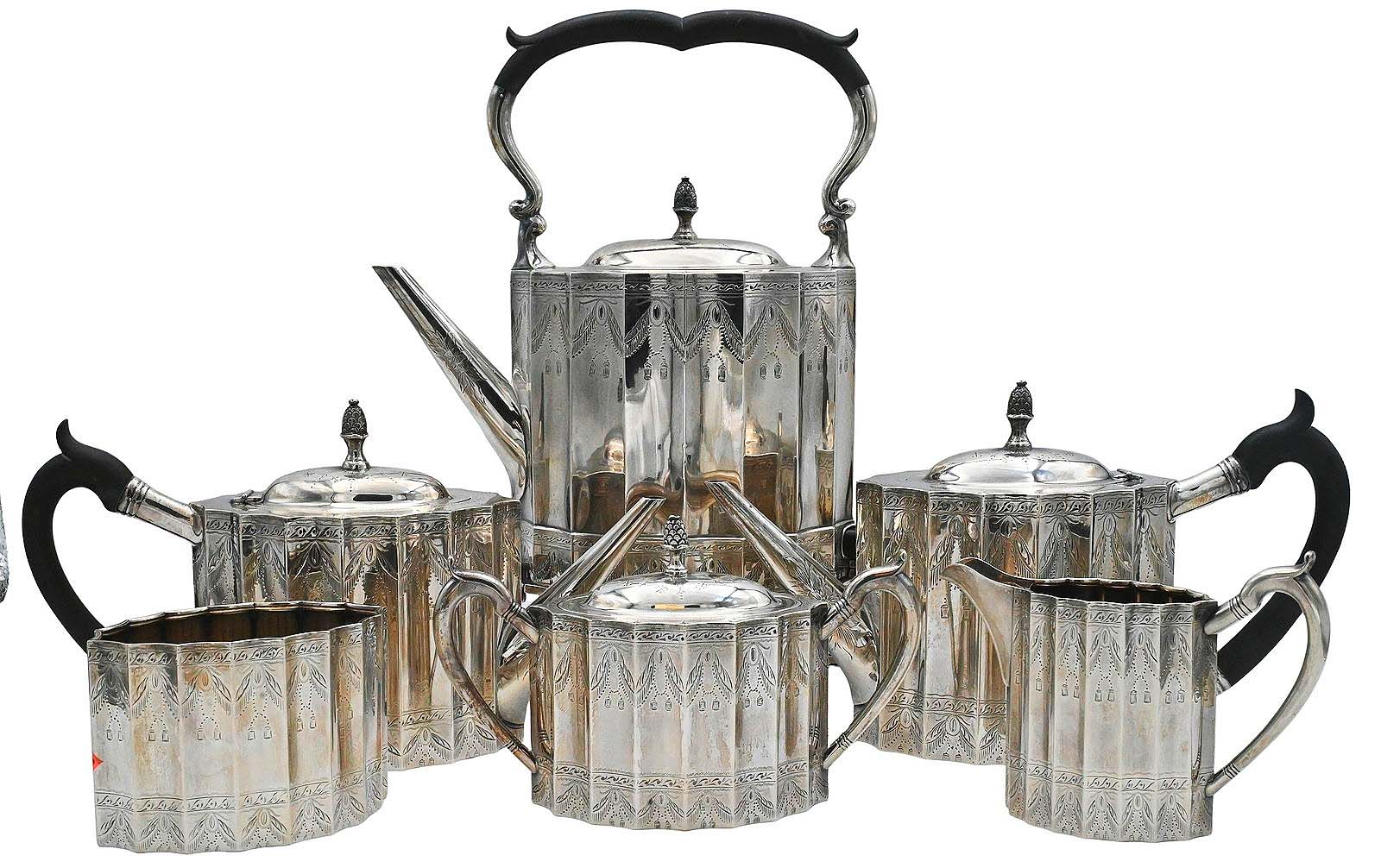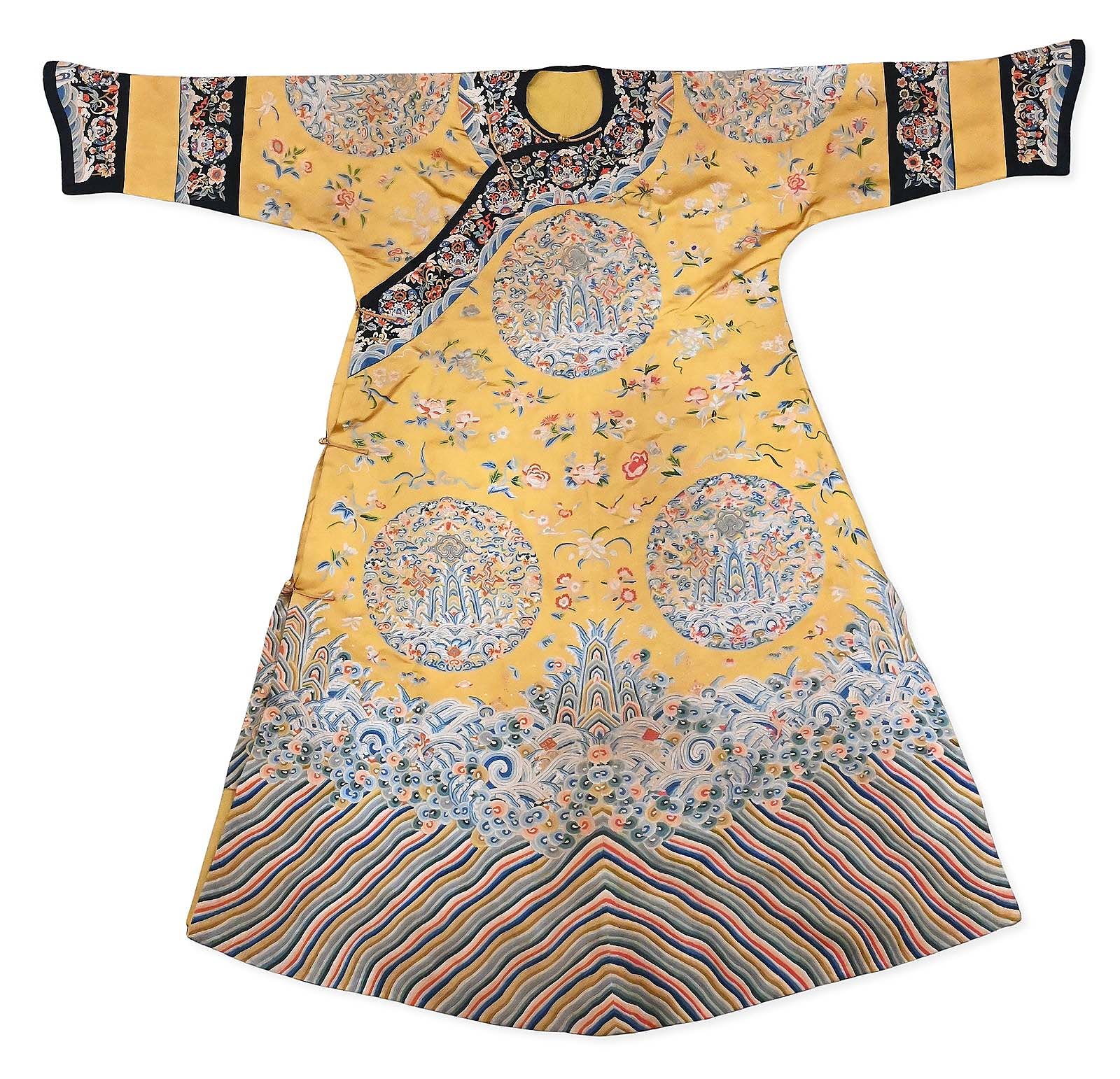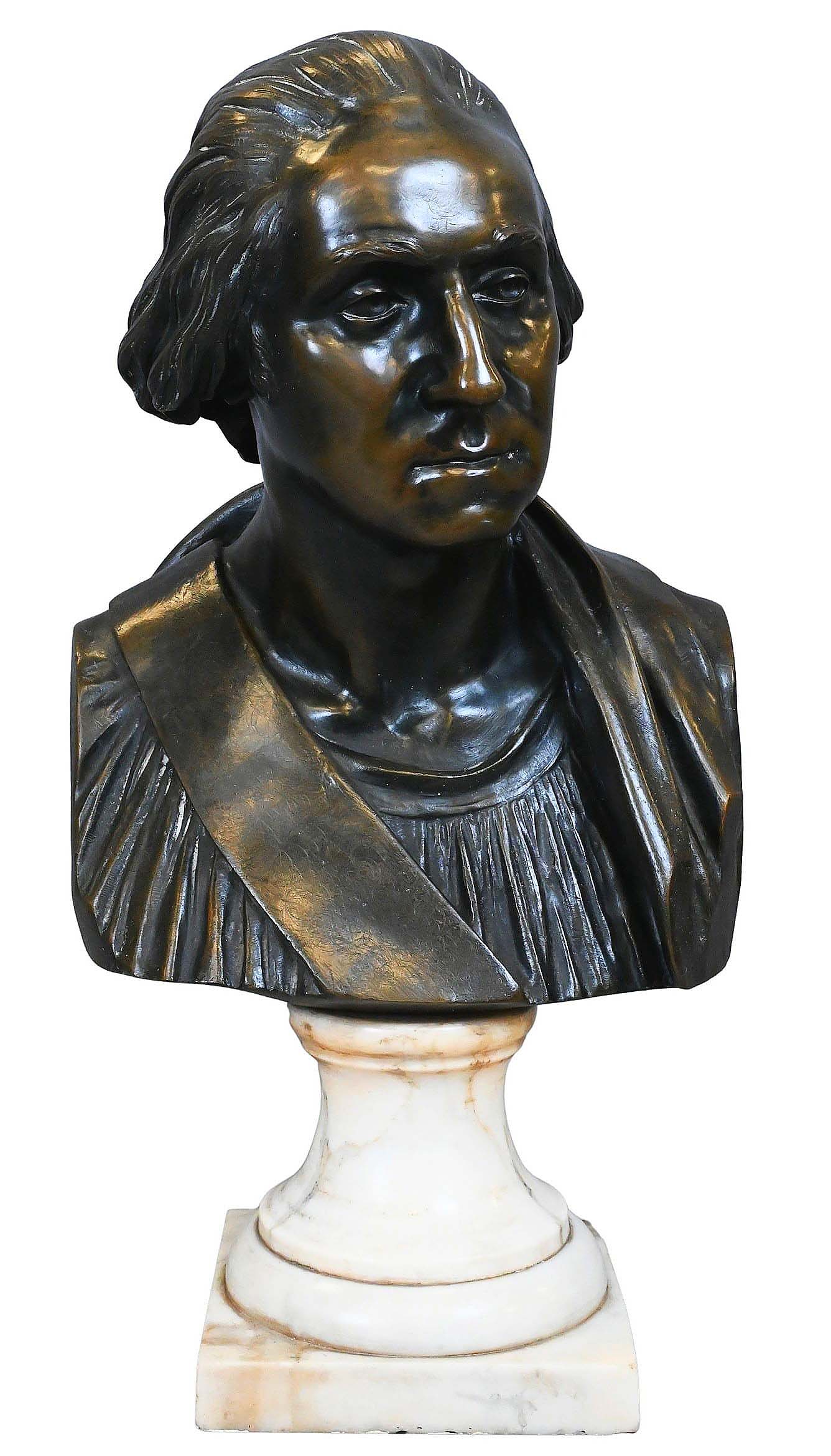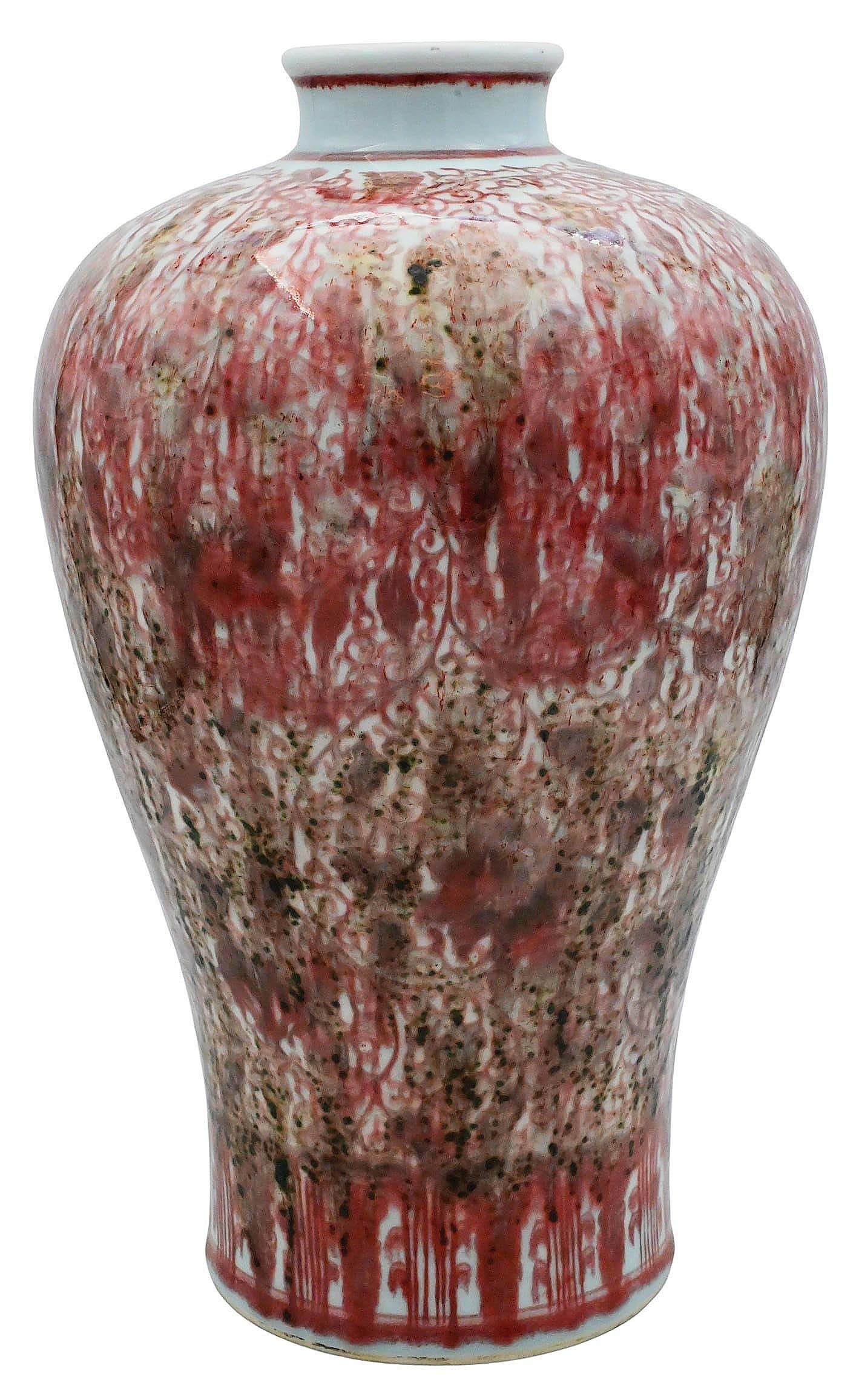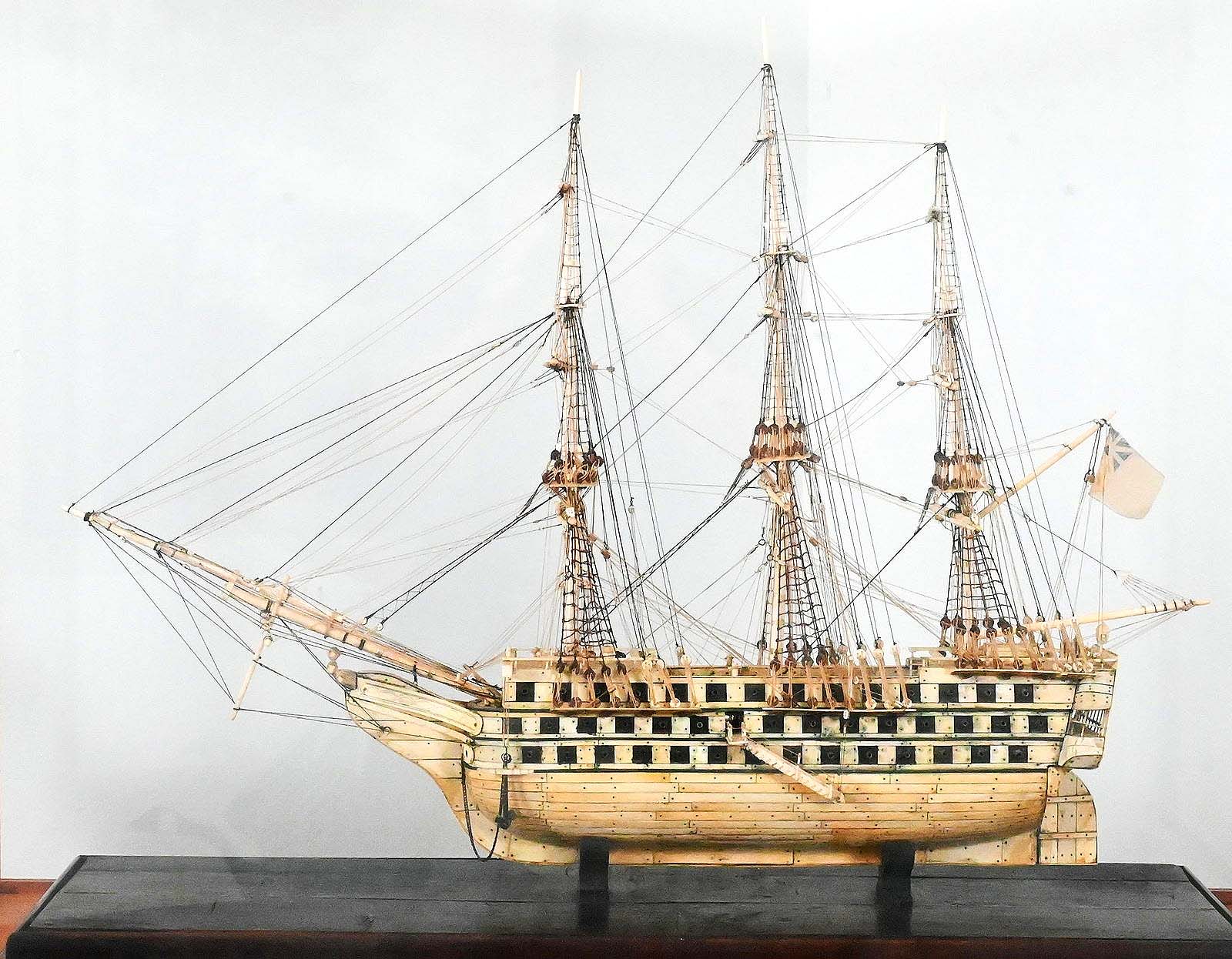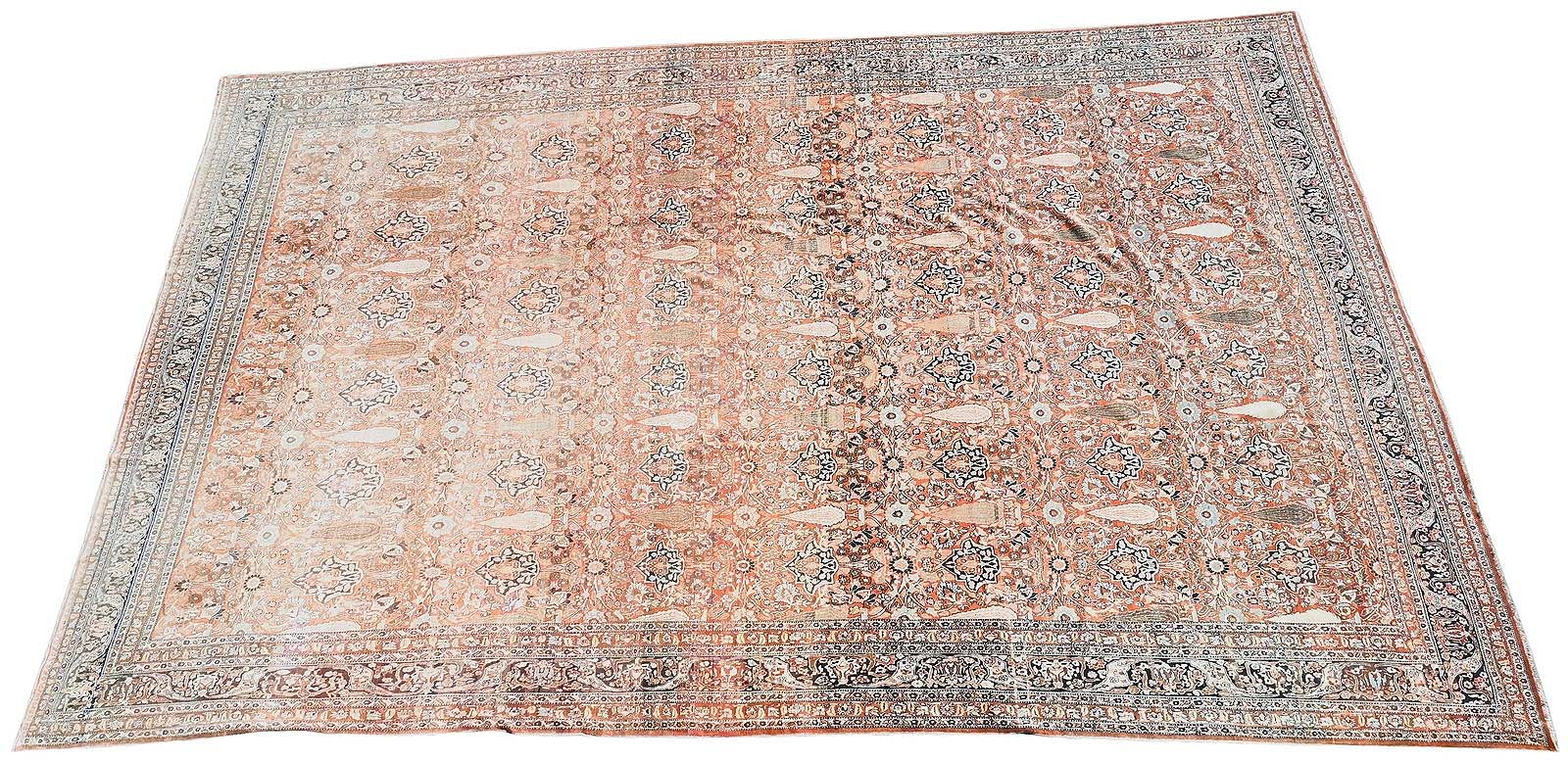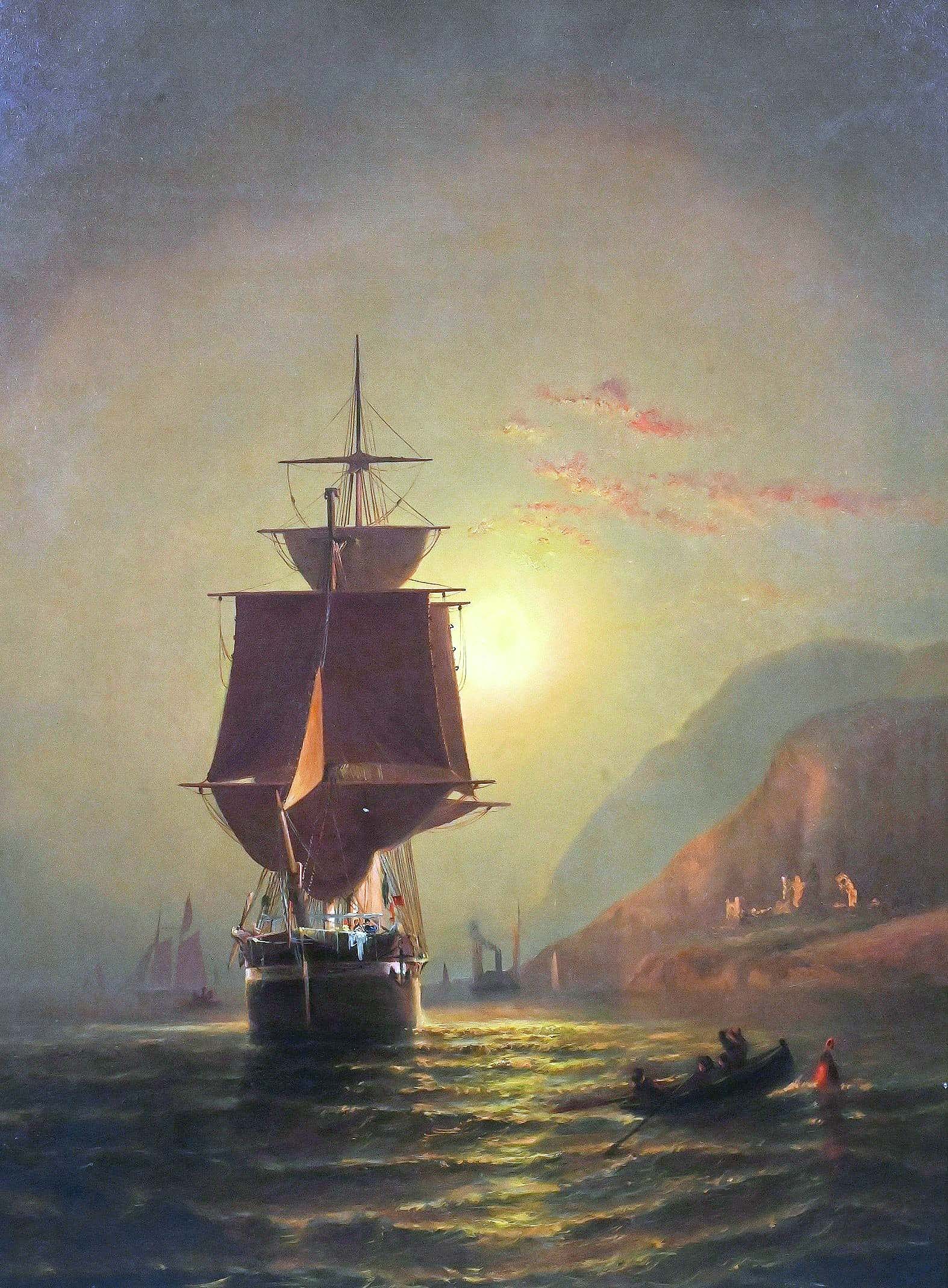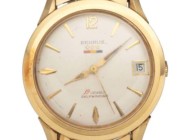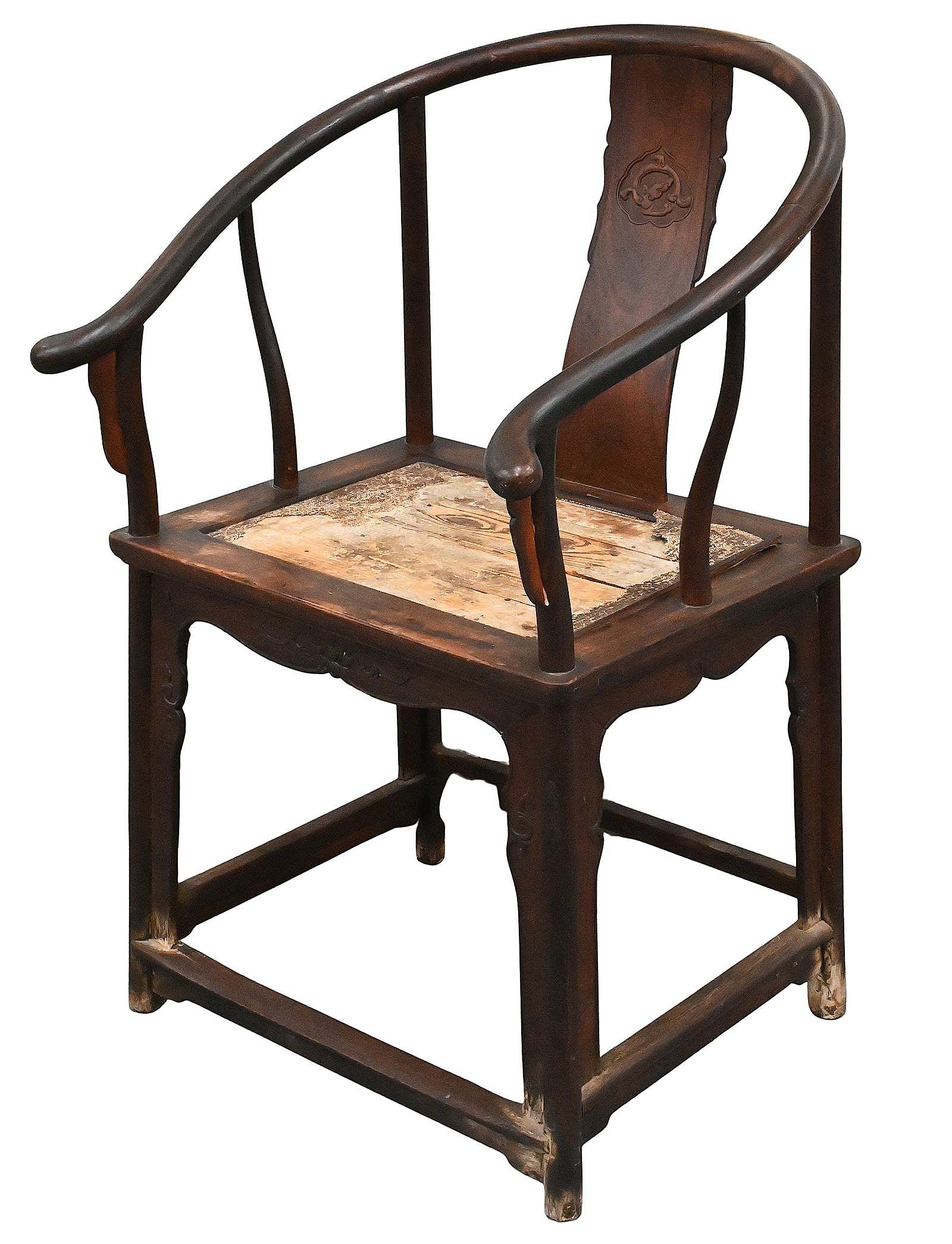
Sitting at the sale-high price of $42,700 was this Eighteenth Century Chinese yoke-back armchair made from huanghuali wood ($2/4,000).
Review by Kiersten Busch
WINDSOR, CONN. — October 25 saw just under 550 lots cross the block at Nadeau’s Auction Gallery’s Major Fall Chinese & Americana Auction. The sale had a 92 percent sell-through rate and totaled $670,115. “We can’t say any specifics about buyers, but we did have lots of international customers and some museums who were winning bidders for this sale,” shared head of auction administration and online operations, Adriana Ferraiolo.
Earning more than 10 times its $2/4,000 estimate at the sale-high price of $42,700 was an Eighteenth Century Chinese yoke-back armchair. Made from huanghuali wood — which is “treasured for its unique colors and wood grain patterns” — the chair contained a stylized dragon medallion on its back splat and light carving on its front apron. Included in Nadeau’s post-auction press release was a quote from president Eddie Nadeau: “Once again, we were surprised and thrilled at the results generated from many of our Asian art selections. You could feel the audience holding their breath in anticipation as the bidding on the Eighteenth Century Chinese yoke-back armchair simply exploded. Nearly 60 bids were registered for this absolute rarity.”
Following the top lot, the next highest-earning piece of furniture was a Chapin School Chippendale cherry and Eastern white pine two-part highboy with ball-and-claw feet made in Windsor, Conn., circa 1780. With extensive provenance within one family, the highboy stood tall at $3,965.

This pair of Chinese porcelain doucai cups were cataloged as “miniature” due to their 1½-inch height; they surpassed their $200/400 estimate to make $17,080.
A few more lots of Chinese wares earned top prices, including a pair of porcelain miniature doucai cups that realized $17,080; more than 40 times the high end of its $200/400 estimate. According to catalog notes, “The doucai technique, which is highly valued amongst collectors, combines underglaze blue outlines with overglaze enamel colors.” Each cup was decorated in famille rose enamels depicting continuous scenes of children and attendants in garden settings.
Despite an estimate of $200/400, a hardstone fish-form brush washer and accompanying figure dated from the Qing dynasty realized much more, at $8,540. The brush washer, in the form of a carp with “well-carved scales and flowing fins,” was most likely carved from pale celadon jade and had a recessed and hollowed reverse. The small carving accompanying it, made from white stone, depicted a figure holding a gourd, which, according to catalog notes, was “a traditional motif signifying good fortune, health, prosperity and longevity.” Both had provenance to the estate of Nina Silberstein (1922-2025), the former CEO of David Webb.
Other notable lots of Chinese origin included a porcelain Kangxi gallipot deaccessioned from a Northeast institution and with provenance to Geraldine Rockefeller Dodge ($7,320) and a yellow silk embroidered court robe from the Qing dynasty ($5,490).
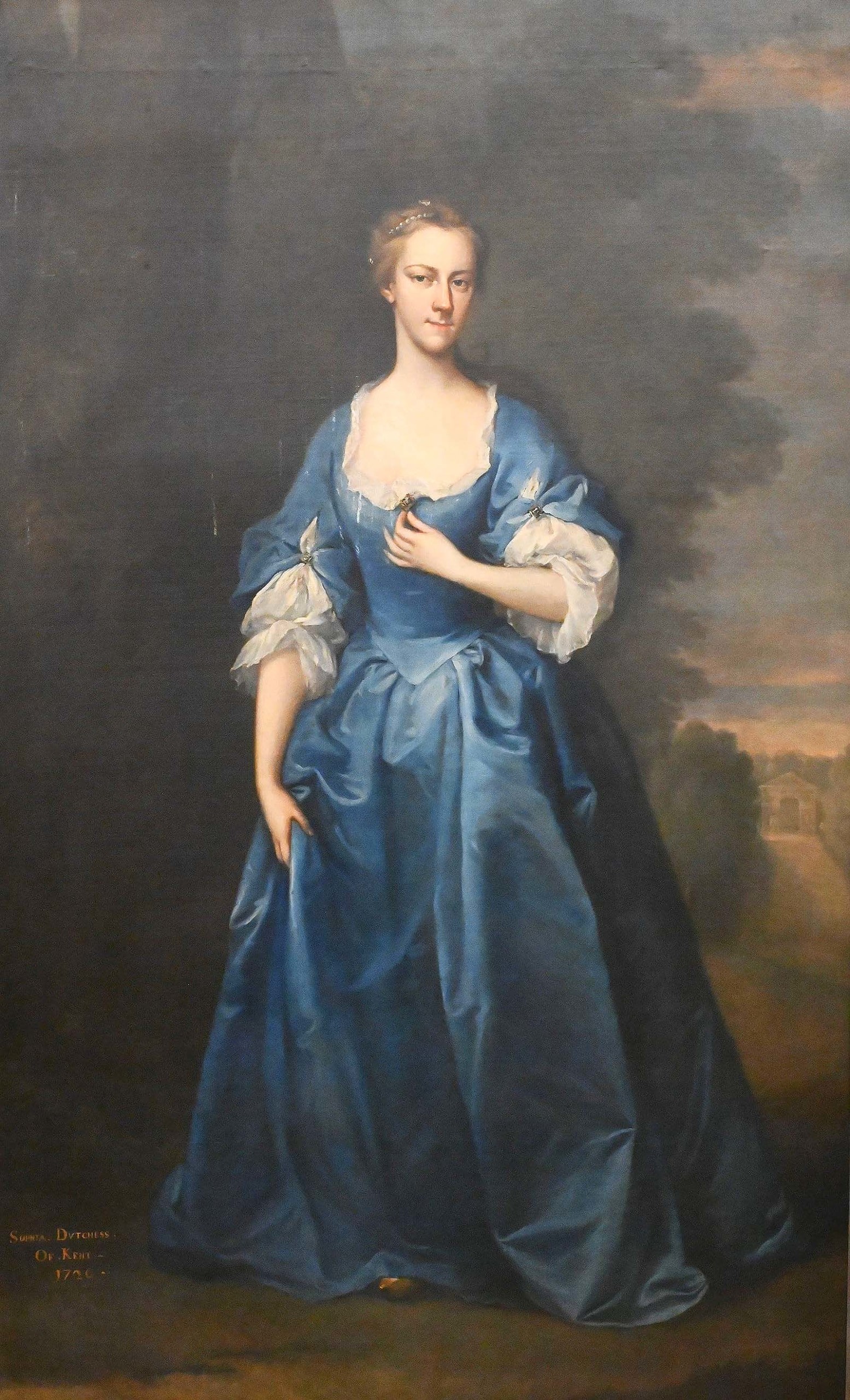
Pushed to $10,370 was “Sophia, Duchess of Kent,” 1729, oil on canvas, 90 by 54 inches framed, which was attributed to Charles Jervas (Irish, circa 1675-1739) and was deaccessioned from a Northeast private institution ($1/2,000).
Fine art was led by “Sophia, Duchess of Kent,” a full-length oil on canvas portrait of Lady Sophia Bentinck, the second duchess and wife of Henry Grey, first Duke of Kent. The work, depicting Lady Bentinck in a blue silk dress and standing in a garden landscape, was attributed to Irish painter Charles Jervas and had provenance to a Mr Novogrod of New York City and a Northeast private institution. Surpassing its $1/2,000 estimate by more than five times, the painting earned $10,370. The next highest price for a portrait was $3,965, earned by a circa 1840-60 American School portrait of a young girl in a coral dress with a bonnet and flowers.
Ship portraiture and ocean landscapes were in abundance and also popular with bidders. Sailing to the highest price of them all — $8,540 — was Elisha Taylor (E.T.) Baker’s “Ships at Sunset Coming to Shore.” Signed by the artist, the painting depicted a large ship with red-brown sails approaching shore as the sun set; it had provenance to an estate in Essex, Conn.
A sailboat racing scene by Norman Wilkinson with provenance to the estate of Sally G. Chubb of Bernardsville, N.J., floated past its $1/2,000 estimate to make $5,185. Titled “British and American Six Meter Teams Racing at Cowes,” the watercolor on paper showed the sailboat Grebe leading the race, which took place on August 5, 1921. Included with the work was a letter inviting Mr Chubb, supposedly a relative of the consignor’s, to a dinner with the King and Queen of England aboard the HMY Victoria and Albert.
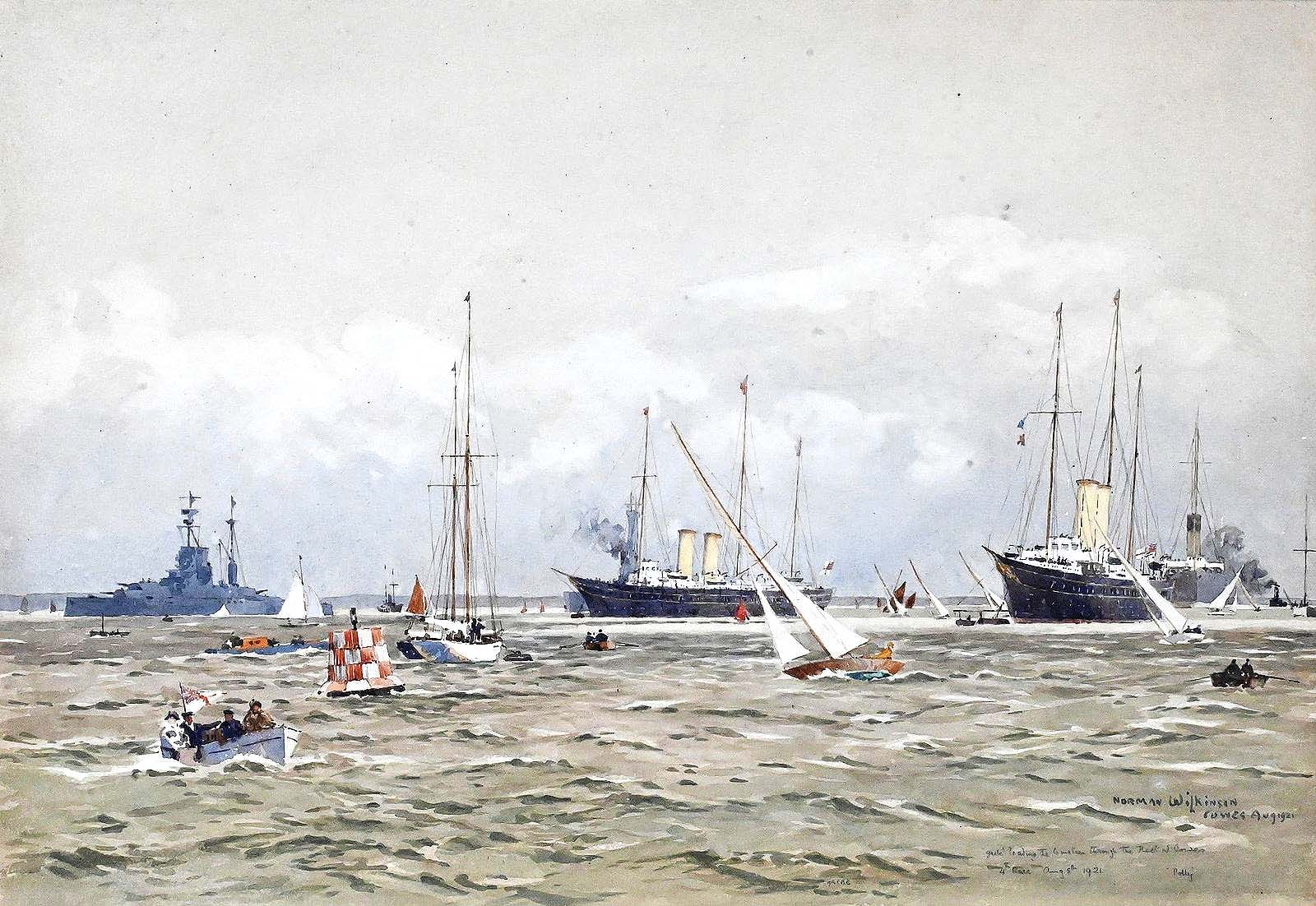
“British and American Six Meter Teams Racing at Cowes” by Norman Wilkinson (British, 1878-1971), 1921, watercolor on paper, 15 by 22 inches, was bid to $5,185 ($1/2,000).
“View of Lower New York from Brooklyn Heights,” done circa 1850 by an unknown American School artist ($5,185) and “Clipper Ship,” an 1850 oil on canvas by William R. Marsh possibly depicting the clipper Ellen Austin ($4,575) were other top-selling paintings featuring or including ships.
A Napoleonic prisoner-of-war bone model of a three-deck ship-of-the-line also excelled, besting its $5/8,000 estimate at $8,540. Also formerly property of the Chubb estate, the model contained details such as three full gun decks, rows of pierced portholes, a miniature British Naval Jack and fully rigged masts, spars and cords. It measured 30 inches in length and was displayed on a wood base.
Non-ship related artworks at the top included Owen J. Gromme’s “On the Scent,” a 1958 oil on canvas depicting two pointers on a red dirt track with deer visible in the tree line, which pointed to $7,320, and the 1860 chromolithograph “Iceland or Jer Falcon” by John James Audubon from the Julius Bien edition of Birds of America ($5,185).

“Iceland or Jer Falcon” by John James Audubon (American, 1785-1851), 1860, chromolithograph, 39 by 26 inches, came from the Julius Bien edition of Birds of America and had provenance to Kennedy Galleries (New York City). It flew past its $1,5/3,000 estimate to perch at $5,185.
Firearms were led by a Boss and Company 12-gauge double barrel takedown shotgun. According to catalog notes, the gun was “most likely manufactured just before WWII” and had a gold cartouche on its underside, as well as engraved floral and scroll work. It sold with a fitted leather hard case for $9,760. Also shooting down high prices were a Winchester Model 21 20-gague shotgun with two barrels ($7,320) and a R.G. Owne 20-gague side-by-side double barrel takedown shotgun ($6,710); both were consigned from the Chubb estate.
A six-piece sterling silver tea service by Tuttle in the Paul Revere Engraved pattern led silver selections at $5,002. Each piece — an electric hot water tilting pot and stand, tea pot, coffee pot, lidded sugar bowl, creamer and water bowl — had fluted sides, engraved swag decorations and pineapple finials. A 28-inch-long sterling silver rectangular double-handled tray with floral and scroll engravings and scalloped corners retailed by Steve Crump and Low followed close behind at $4,270.
Nadeau’s will conduct its Annual Holiday Jewelry and Luxury Gifts Sale in early December, with its Annual New Year’s Day Sale following. Prices quoted include buyer’s premium as reported by the auction house. For information, 860-246-2444 or www.nadeausauction.com.

